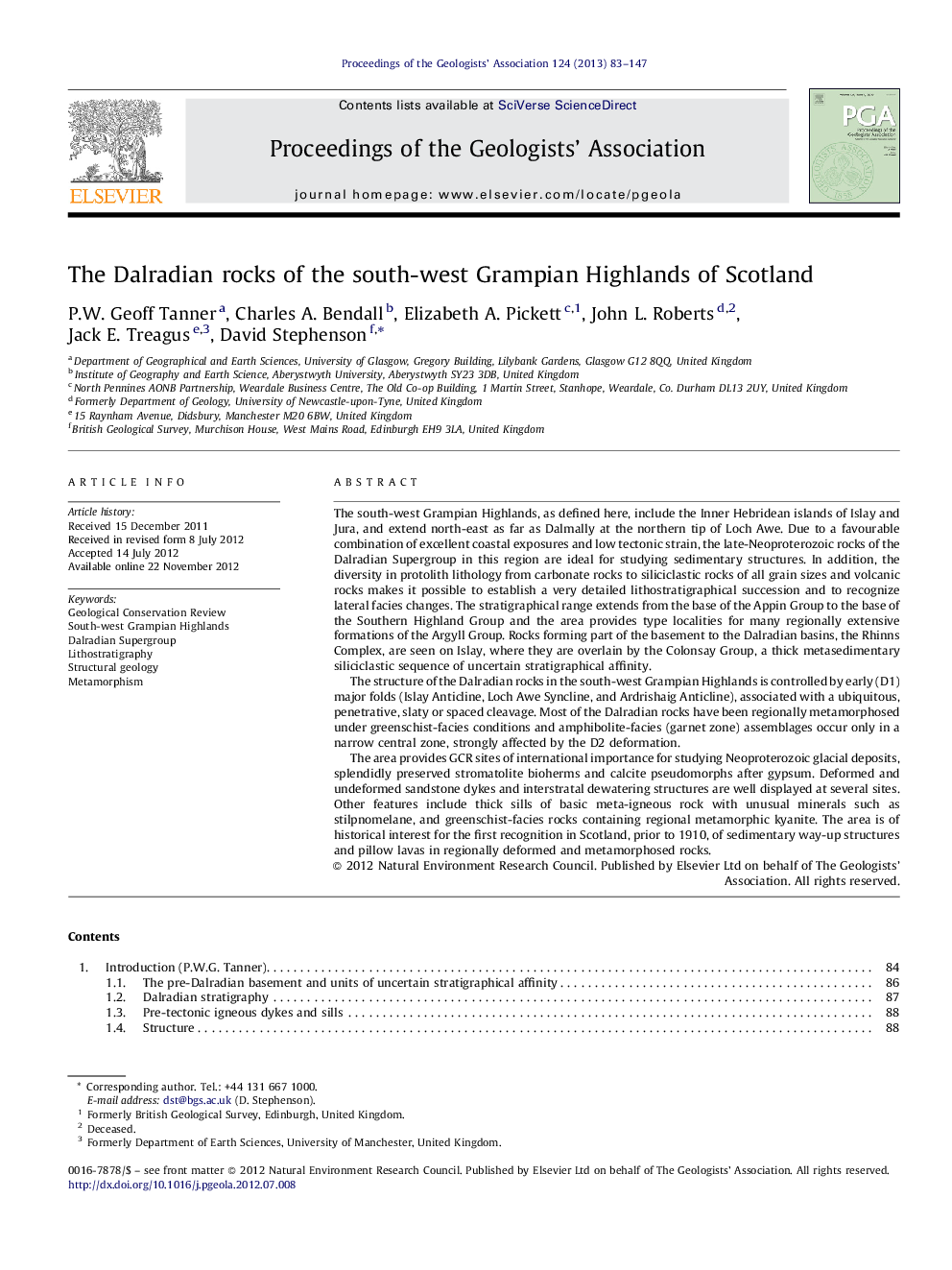| کد مقاله | کد نشریه | سال انتشار | مقاله انگلیسی | نسخه تمام متن |
|---|---|---|---|---|
| 4734700 | 1640660 | 2013 | 65 صفحه PDF | دانلود رایگان |
The south-west Grampian Highlands, as defined here, include the Inner Hebridean islands of Islay and Jura, and extend north-east as far as Dalmally at the northern tip of Loch Awe. Due to a favourable combination of excellent coastal exposures and low tectonic strain, the late-Neoproterozoic rocks of the Dalradian Supergroup in this region are ideal for studying sedimentary structures. In addition, the diversity in protolith lithology from carbonate rocks to siliciclastic rocks of all grain sizes and volcanic rocks makes it possible to establish a very detailed lithostratigraphical succession and to recognize lateral facies changes. The stratigraphical range extends from the base of the Appin Group to the base of the Southern Highland Group and the area provides type localities for many regionally extensive formations of the Argyll Group. Rocks forming part of the basement to the Dalradian basins, the Rhinns Complex, are seen on Islay, where they are overlain by the Colonsay Group, a thick metasedimentary siliciclastic sequence of uncertain stratigraphical affinity.The structure of the Dalradian rocks in the south-west Grampian Highlands is controlled by early (D1) major folds (Islay Anticline, Loch Awe Syncline, and Ardrishaig Anticline), associated with a ubiquitous, penetrative, slaty or spaced cleavage. Most of the Dalradian rocks have been regionally metamorphosed under greenschist-facies conditions and amphibolite-facies (garnet zone) assemblages occur only in a narrow central zone, strongly affected by the D2 deformation.The area provides GCR sites of international importance for studying Neoproterozoic glacial deposits, splendidly preserved stromatolite bioherms and calcite pseudomorphs after gypsum. Deformed and undeformed sandstone dykes and interstratal dewatering structures are well displayed at several sites. Other features include thick sills of basic meta-igneous rock with unusual minerals such as stilpnomelane, and greenschist-facies rocks containing regional metamorphic kyanite. The area is of historical interest for the first recognition in Scotland, prior to 1910, of sedimentary way-up structures and pillow lavas in regionally deformed and metamorphosed rocks.
Journal: Proceedings of the Geologists' Association - Volume 124, Issues 1–2, January 2013, Pages 83–147
